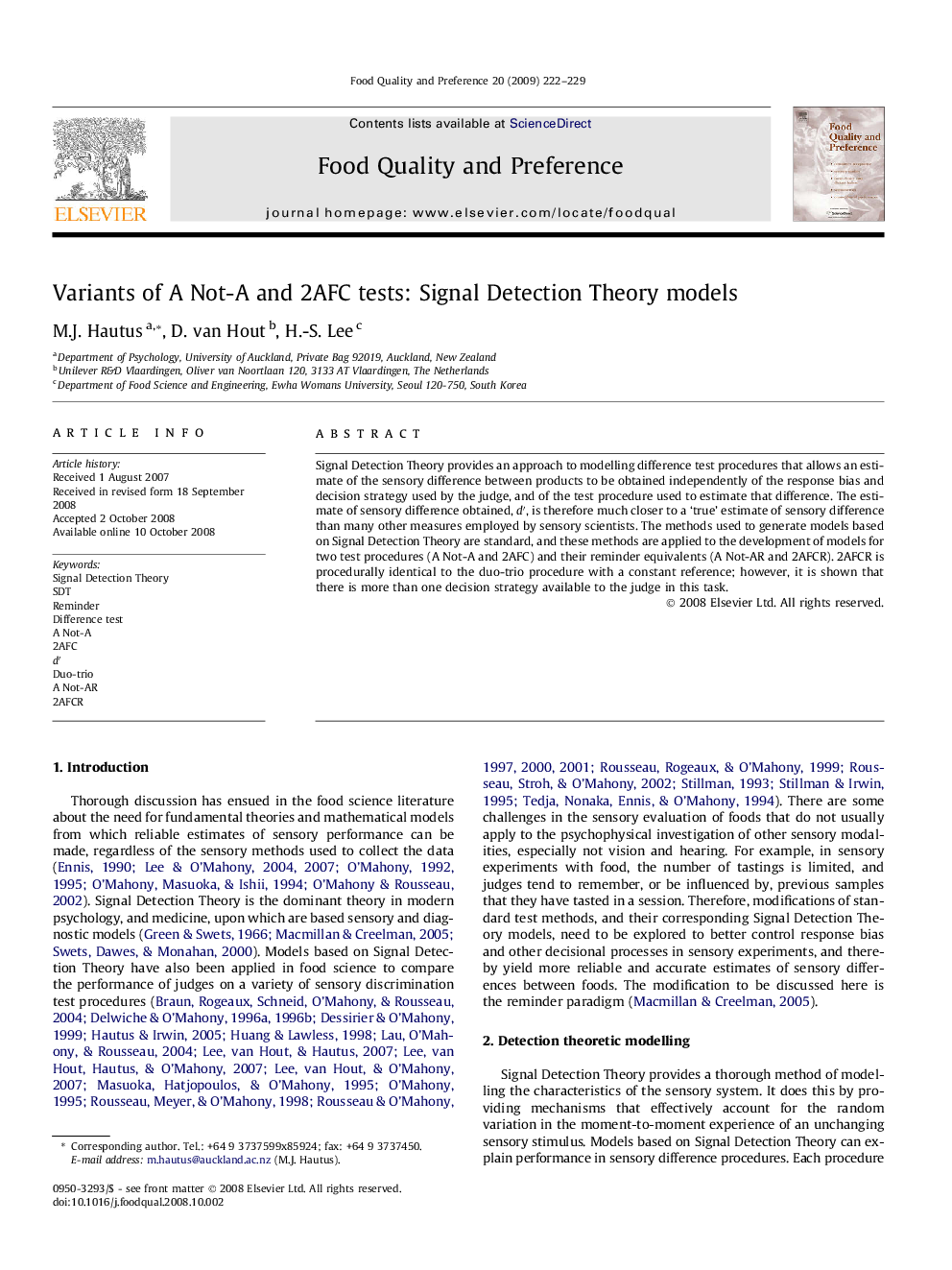| Article ID | Journal | Published Year | Pages | File Type |
|---|---|---|---|---|
| 4317951 | Food Quality and Preference | 2009 | 8 Pages |
Signal Detection Theory provides an approach to modelling difference test procedures that allows an estimate of the sensory difference between products to be obtained independently of the response bias and decision strategy used by the judge, and of the test procedure used to estimate that difference. The estimate of sensory difference obtained, d′, is therefore much closer to a ‘true’ estimate of sensory difference than many other measures employed by sensory scientists. The methods used to generate models based on Signal Detection Theory are standard, and these methods are applied to the development of models for two test procedures (A Not-A and 2AFC) and their reminder equivalents (A Not-AR and 2AFCR). 2AFCR is procedurally identical to the duo-trio procedure with a constant reference; however, it is shown that there is more than one decision strategy available to the judge in this task.
